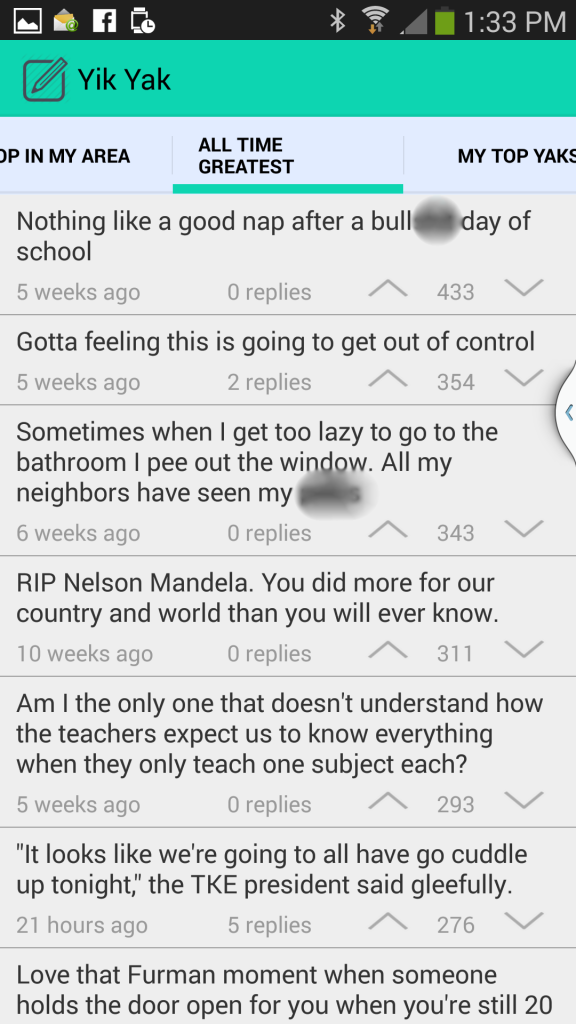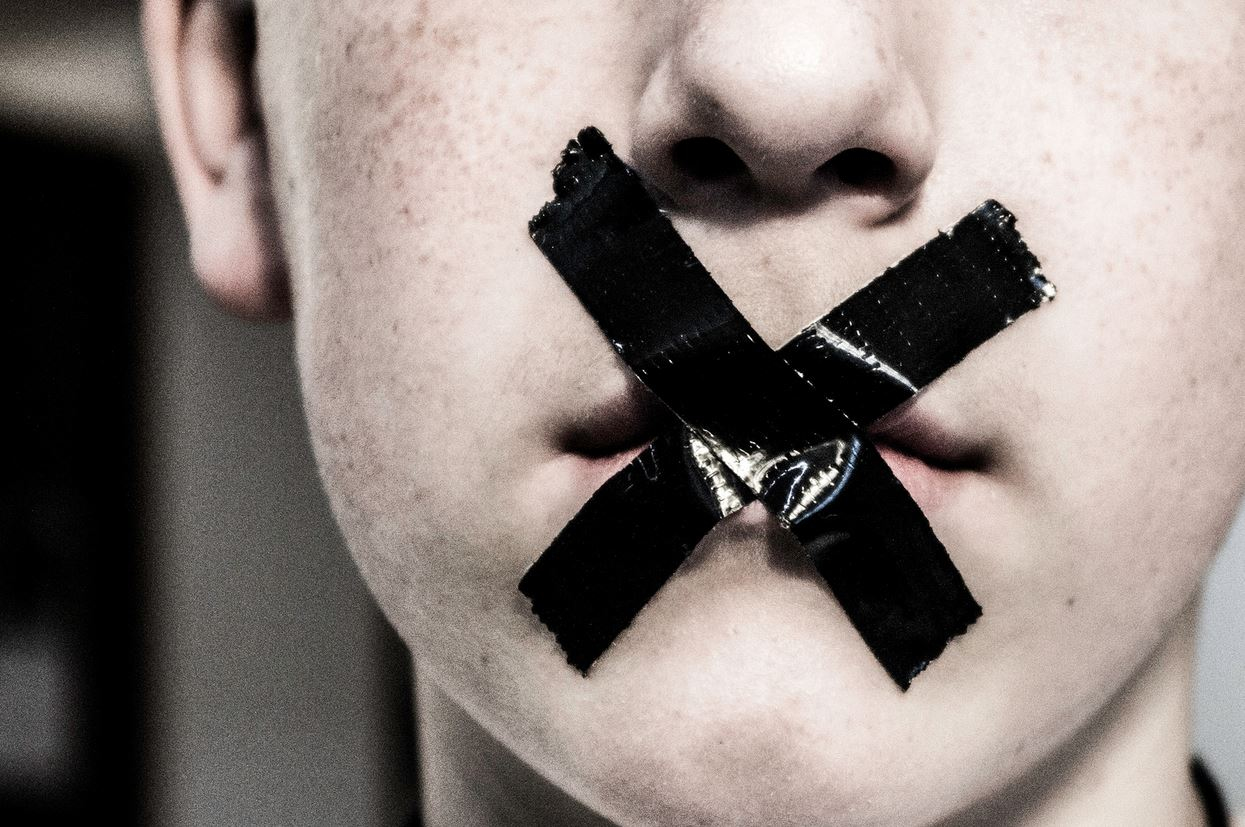Here’s what you might have missed in social media in the last week…..
The Good
Ellen Breaks Twitter
Ellen DeGeneres has perhaps the coolest “selfie” experience ever.While hosting the Oscars, Ellen decided to gather a group of celebrities for a selfie. And then she broke Twitter.
Ellen also broke the highest Twitter records by getting 400K retweets in 30 minutes. When the screen shot was taken, it had been retweeted 2.7 million times.
As a result, Twitter lost power for over 20 minutes, and sent out an apology to it’s users. Well played Ellen.
Minecraft Movie

For those of you who found yourselves at a movie theater laughing and crying at the Lego Movie (and not just because of how much cash you dropped on 4 tickets and some popcorn), there is MORE good news. Most of our kids from 8-15 years old are Minecraft FREAKS.
We should therefore, not be surprised that there is a Minecraft movie in the works.
That’s right a “live action” movie based on the wildly popular game (100 million users to date).
As long as that 40 second music wind-chime-tinkling-tune on a loop isn’t the consistent musical accompaniment, I should be able to make it out without shoving a pencil in my eye.
The Bad
How to Lose $80K In One Facebook Post
NOTE TO SELF:
The next time I’m a college freshman and my dad wins an age-discrimination suit against the high school that employed him, I will remember to NOT post a snarky victory status on Facebook, especially when the settlement includes a gag order – because then my parents will lose the settlement money.
The Ugly
This Teen Has Sex With a Hot Pocket, Seriously

When I present to parents I talk about the immaturity of the teen brain. It just isn’t done cooking yet, literally. A young adult’s brain does not have a fully connected frontal lobe. So they’re sorta brain damaged. But as parents we forget that and tend to say things like: “How on earth did you think that was a good idea?”, “No, I have never wondered what would happen if you microwaved a raw egg”, and “Why is there cottage cheese on the ceiling?”.
This story lives at the intersection of “Over Cooked Hot Pocket” AND “Under Cooked Frontal Lobe”.
Once upon a time there was a young man who wanted to increase his Twitter followers. He created a Vine of himself fornicating with an empty box of Pop Tarts. After a brief flash of social media fame – the muse visited once again. In an effort to skyrocket past his previous fame, he decided to have sex with a microwaved Hot Pocket, literally.
“I tried doing it without a condom and it was just, like, way too hot,” he said. “I put it in the fridge for a little bit and I was like, ‘Dude, I’m gonna have to use a condom if I’m gonna actually stick my d*** in the whole Hot Pocket.'”
Alas, in the end the fame backfired; the courageous young man who risked his personal reputation AND his junk ended up with suspended Twitter and Vine accounts. In addition, Hot Pockets blocked him on Twitter….everybody’s a critic.
In other (apparently) unrelated news….
Nestle USA issued a voluntary recall of its Philly Steak and Cheese Hot Pockets because they may contain “diseased and unsound animal meat” – which is an unkind characterization. What teens do with their Hot Pockets is really none of our business. Unless of course they post it to Vine, then it becomes “forever”.
 I’ve realized that the barrel has no bottom. There will be no scraping the bottom, because there will always be another app or social platform to discuss which tops (or bottoms) the potential ugliness of the previous one.
I’ve realized that the barrel has no bottom. There will be no scraping the bottom, because there will always be another app or social platform to discuss which tops (or bottoms) the potential ugliness of the previous one.
In honor of Safer Internet Day, we have a new cootie to dissect. This one is called Yik Yak – perhaps because that is what it will make you want to do….
Yik Yak is worse than Ask.fm. Yes, I said it – WORSE. And if you aren’t sure what Ask.fm is read two of my previous posts:
- Entire High School Football Team Gets Suspended Because of Cyberbullying on Ask.fm
- An Open Letter to Teens Who Use Ask.fm; Read, Post, & Share
Why Yik Yak is Worse than Ask.fm
As we’ve seen before, Ask.fm’s marketed anonymity makes it easy for anyone to ask YOU on YOUR profile questions. They can be nasty and mean but they’re asking YOU.
On Ask.fm:
- A user creates a profile (most kids use their real names and location – which is dumb, obviously)
For this example we’ll call her Sally Smith from Topeka Kansas - Another user can ask the first user any question at all anonymously
Another user we’ll call Jenny Jones from Topeka Kansas - Jenny goes onto Sally’s Ask.Fm page and posts a question – questions like the following are extremely common on Ask.fm
* Why are you such a whore?
* Why don’t you kill yourself?
* Do your parents hate you as much as everyone else? - Sally does not know who is posting the question
Now let’s apply the same scenario above to Yik Yak
- A user downloads the app
Which by the way is meant for 17+ college students, and the app maker warns about inappropriate content - The app grabs the user’s location via GPS
- The user posts a comment openly to whomever is listening about whatever
**Do any of you know Sally Smith? She is such a whore
**I’m pretty sure my English teacher – Mr. Taylor- is gay - The post arrives in the feed of anyone physically near the user posting. So you will see the posts from everyone within x radius of you. Think: community wide
- A map accompanies every single post showing exactly where you physically were when you posted
Here is an actual example from my current Yik Yak screen
Note the second post which reads “Gotta feeling this is going to get out of control”.

Actual Yik Yak Feed
When we click on that particular post we get a map – apparently whomever posted that comment was inside Vestavia Hills High School at the time
By zooming in slightly we will know exactly the spot where the user was standing inside of the building when that post was uploaded to Yik Yak
Biggest Concerns with Yik Yak
Anonymity: This is the same issue with Ask.fm. Anonymity makes bullies feel brave. We can expect to hear a lot more about this app in conjunction with cyberbullying issues.
Posting: It is feasible and reasonable to assume that it won’t be long before the feed becomes my generation’s equivalent of the bathroom wall. “For a good time call….”
Location: This app not only serves up the feed of the posts closest to you (location issue #1), but it then reveals the location of the user posting (location issue #2).
What happens now?
This app is not meant for children. The app makers make that plain in their Android and IOS marketplace descriptions.
According to their marketing language:
– The ultimate way to share your thoughts and recommendations, anonymously.
– Share your own Yaks and see what other people are saying.
– No login, no password, no traces; simply anonymous.
– Upvote and downvote Yaks, see what makes it to the ‘Hot’ page!
– Perfect for college/university students to stay social!
Obviously your child should have not have this app on his/her phone.
The only thing we can continue to do is to parent our children. Watch this video for a review on the basics.
 As I travel around the US teaching internet safety to students, parents, and school districts one of the central topics of discussion is this idea of “media literacy”. What is media literacy?
As I travel around the US teaching internet safety to students, parents, and school districts one of the central topics of discussion is this idea of “media literacy”. What is media literacy?
As consumers of media we need to understand when we are being subjected to some sort of media bias 100% of the time. Producers of content are trying to make you FEEL something and believe something which might go against your values.
Do you even realize when it’s happening? The overwhelming percentage of media messages have some sort of bias (even most news outlets). When you hear or see a message can you identify the: sexist, ageist, racist, religious biases, or political agendas?
And please don’t assume that your favorite news agency only leans in one direction. That direction will blow in the wind according to the slate of advertisers on deck. Every opinion is for sale, and the farther you dig into media literacy the clearer that will become.
Being media literate helps you to analyze and evaluate the message you see, hear, and “consume” via all delivery systems: print, radio, television, and digital. Teaching media literacy to young people becomes particularly important because of the massive amount of content teens consume on a daily basis.
The average American teenager spends:
- 31 hours per week watching television
- 17 hours per week listening to music
- 3 hours per week watching movies
- 4 hours per week reading magazines
- 10 hours per week online
GRAND TOTAL: 10 hours and 45 minutes per DAY on mass media consumption (according to a study done by the Henry J. Kaiser Family Foundation).
In addition, an overwhelmingly high percentage of the media bias your child is consuming is sexual in nature.The messages your children receive (depending on what they are watching/hearing/reading) generally takes on slight variations of the same flavor:
young men are shallow and heartless sex seekers
young women should only just care about looking photoshop perfect in order to hook and keep the heartless sex seeker
That’s it – this is the basic lens through which your children consume media. Awesome.
Media Literacy Trick: Consume Great Content
If you want to cultivate media literacy in your home and with your children, you need to lay a foundation of solid and worthwhile content to act as a counterpoint to all of the vomit content which exists in the real world and in the digital ether. Incidentally, most of the real-world “print” vomit content is located at the end of the grocery store check out aisle.
If you our your child are at ALL engaged to the current relative size of a Kardashian’s back side….begin reading this list STAT. You need an intervention.
Amazon.com has put together a list of the 100 Books Every Person should read. Think of this as a literary bucket list.
- Go through the list
- Mom and Dad: Read the ones YOU haven’t read yet
- If appropriate to your child’s reading level/maturity – have your child read it as well
- Discuss the book over dinner – like your own little book club
- Your child’s insights will impress you, they were just waiting to be asked. What took you so long?
Remember as you consume content, don’t shy away from the content which might clash with the values you are trying to teach your own children. For example: A book with violent undertones (ie Hunger Games) can act as a springboard for discussion which will linger in your child’s mind far after the discussion is over.
What to do now?
Go to Amazon.com and check out the list. Begin reading WITH your child, and pay attention to the content your child is consuming.
Like today.
Rachel Busman, PsyD recently published a Huffington Post article called Caught Your Kid Sexting, Now What?
Dr. Busman makes great points related to parent education; a point I stress when teaching parents, students, and school districts. Parents must become educated when it comes to their child’s actual digital life. Once educated, parents need to engage at every level of their child’s digital experience. And yes that means setting limitations (GASP!) and snooping.
- Is it hard? Yes.
- Is it exhausting? Yes.
- Do you have any other choice? No.
For the record
I take issue with just a few things in Busman’s article
- While some tweens and teens use Facebook (for reasons I can’t explain, kids in rural areas tend to use Facebook more than kids living in urban or suburban areas). If we’re going to talk about being educated about your child’s actual digital life, put a closer eye to: Twitter, Instagram, SnapChat, and Ask.fm
- Sexting is a felony. If your child takes a sexually suggestive photo of him/herself and sends it to someone else, even another child – your child may very likely be charged with a F-E-L-O-N-Y. And it’s happening every single day. Sexting is unlike alcohol use, breaking curfew, or other relatively minor youthful transgressions. Your child’s future is at risk, quite literally, at the hands of the device he is carrying in his back pocket.
- The reality of this situation is that teens are losing their: lives (via sextortion, suicide, and homicide), personal reputations, athletic and academic college scholarships, college acceptances, and in some cases their personal freedom as they go to jail or get listed on a child predator registry (or both). (Note: Yes, your little angel can be listed as a sexual predator if convicted of sexting which is actually a charge of creation, possession, and/or trafficking of child pornography – which will do wonders for their future career options.)
She said WHAT?
I agree with Busman when it comes to her points on : parent education and rule setting. But then, she says that if you do, in fact, catch your child sexting:
“Hard as it may be, you want your tone to be open and concerned — not angry and blaming, or shocked and horrified. You don’t want to start out by slapping on a bunch of restrictions. You’re not going to be able to have a real conversation if you do that, and kids will be more prone to do an end-run around the rules if they don’t feel that you understand them. Social media may not seem important to you, but it can seem like life or death to teenagers.”
OK, so this shocks me a little bit. I think I even sucked in my breath and muttered an “oh, HELL no”.
I happen to be a huge supporter of our teens and I love meeting your children when I present at schools all over the United States. The vast majority of these kids are smart and funny. They’re trying hard to just get through a life that seems like some sort of medieval obstacle course complete with swinging blades and burning bales of hay. Your children need your help. As a parent that “help” can sometimes require you to push, and other times pull.
Grab a Hammer
Busman recommends calm and NOT slapping on a bunch of restrictions. Really?
If I have done my part as a parent; if I have taken the time and effort to become educated as to my child’s digital life; if I have become engaged and asked all the right questions; if I have set rules and I’ve tried to be a good digital role model; if I have told my child to NOT take a photo of her junk, if my child KNOWS this…..and still she takes a photo of said junk? There will be no calm and there will be no discussion.
I’ve been teaching Internet Safety since 2003 and I’ve seen parents come and go by the score. And let me tell you this. If your do not make your child’s digital life stop on a dime the first time something happens? You’re cooked.
This is not the time for understanding, coddling, or anything else other than unadulterated consequences. For me, that requires smashing the phone with a hammer. That’s it. Done. There have got to be consequences within your home. If your child knows the rules and breaks them, feel free to break the phone.
I agree with Busman’s point that :
Social media may not seem important to you, but it can seem like life or death to teenagers.
My response? Your child broke the family contract. If their digital social life is so critical to their well being, then they should NOT have broken the contract. When are your children supposed to understand actual life consequences if you don’t provide them in the home? The real world is NOT going to be filled with calm and understanding: police officers, prosecutors, landlords, or even in-laws.
Sexting is not alcohol, it’s not drugs, or even sex – which could potentially be “dabbled in” as a course of becoming an adult; a sort of “learning lessons” along the way.
If you do not provide these consequences at home your local prosecutor and online sex predator would be more than happy to do so in your place. But I promise you, you won’t like the results.


